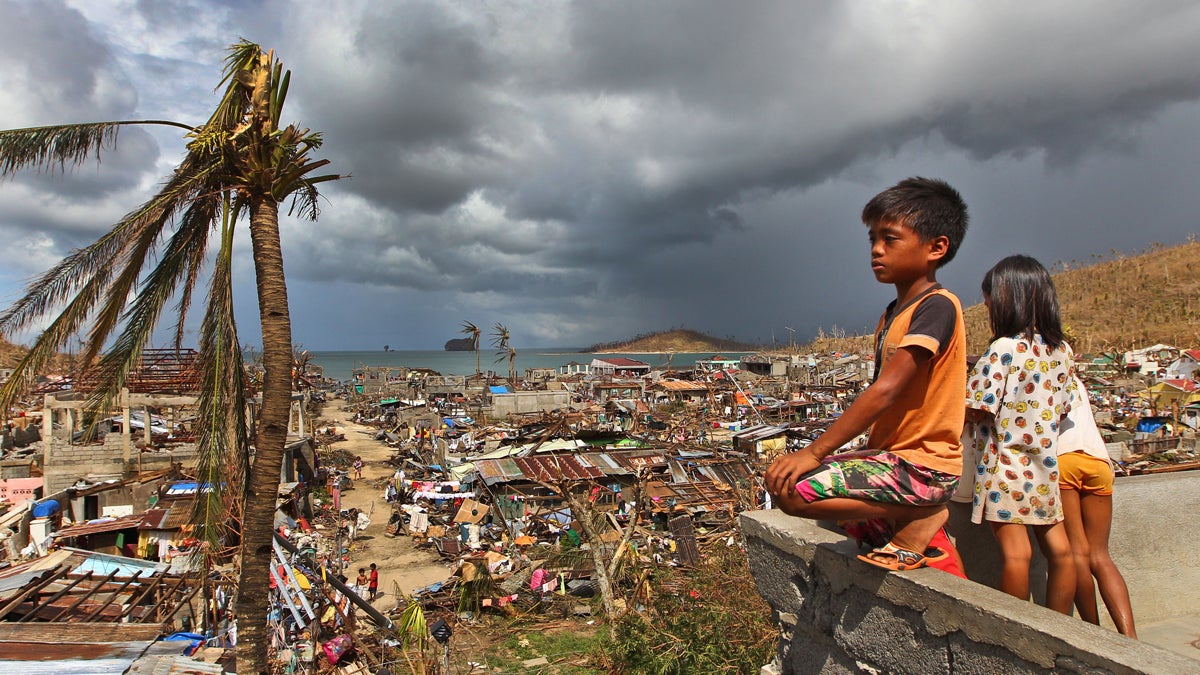Filipino groups seek protected immigration status after Typhoon Haiyan

Filipino children play as houses damaged by Typhoon Haiyan are seen in the background in Marabut, Philippines, Thursday, Nov. 14, 2013. (Dita Alangkara/AP Photo, file)
After Typhoon Haiyan roared through the central Philippines last month, the United States faced with a delicate question.
Of about 1.8 million Filipinos living in the United States, an estimated 270 thousand are in the country illegally.
That estimate is courtesy of J.T.S. Mallonga, president of the Filipino American Legal Defense and Education Fund. In the wake of the storm and an earthquake, he hopes the United States will grant those residents temporary protected status, an official designation that would grant Philippine nationals who apply legal standing. It would allow them to work and, should they leave the country, allow then to come back.
“It’s … humane that you allow the people who remit money, who are primary breadwinners, to go home to the Philippines for personal reasons, in terms of closure for people who have family members who died and be there with all those who are trying to rebuild their lives,” said Aida Rivera, the Pennsylvania representative to the National Federation of Filipino American Associations.
She mentioned a Philadelphia family with relatives in the Philippines who are either missing or deceased.
For now though, she said, “it would be inconceivable to for them to go and bury their dead and not be able to come back.”
The Obama administration made certain changes immediately in the wake of the storm to make it easier for Filipino nationals to extend their visas.
The TPS does not require congressional approval, but U.S. Sens. Bob Menendez and Cory Booker of New Jersey have signed on in support of granting the temporary status.
Protected status is typically sought by the sending country, and a representative of the Department of Homeland Security said officials are still waiting for the Philippine government to make that request.
Historically, however, the temporary status has been extended repeatedly, said Ira Mehlman of the politically conservative Federation for American Immigration Reform.
“We have people in this country who were granted temporary protected status back in the 1990s still here under that status,” he said. “Temporary has to mean temporary otherwise the whole program becomes pointless and simply another way to admit more people to the country legally.”
The last time the U.S. extended TPS after a natural disaster was following the 2010 earthquake in Haiti — in a record eight days. Haiyan hit the Philippines in mid-November.
WHYY is your source for fact-based, in-depth journalism and information. As a nonprofit organization, we rely on financial support from readers like you. Please give today.

